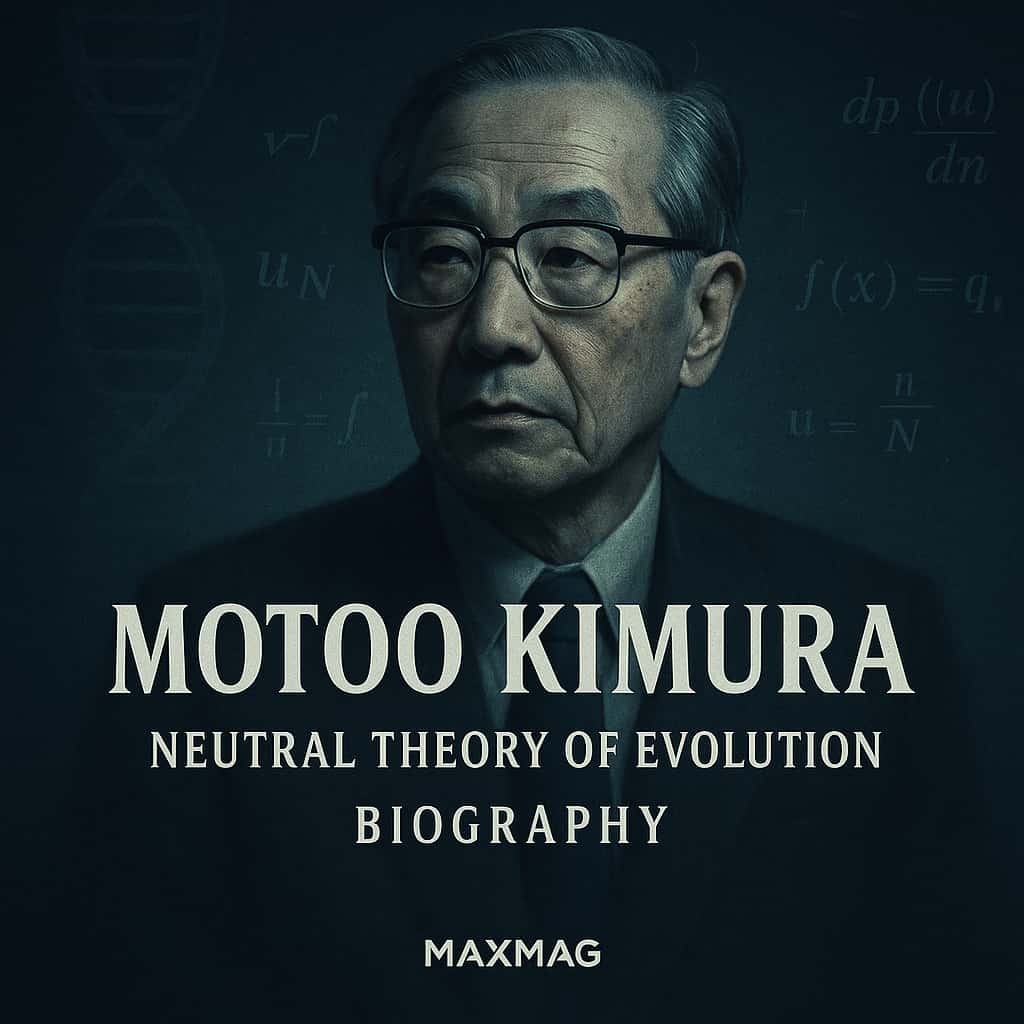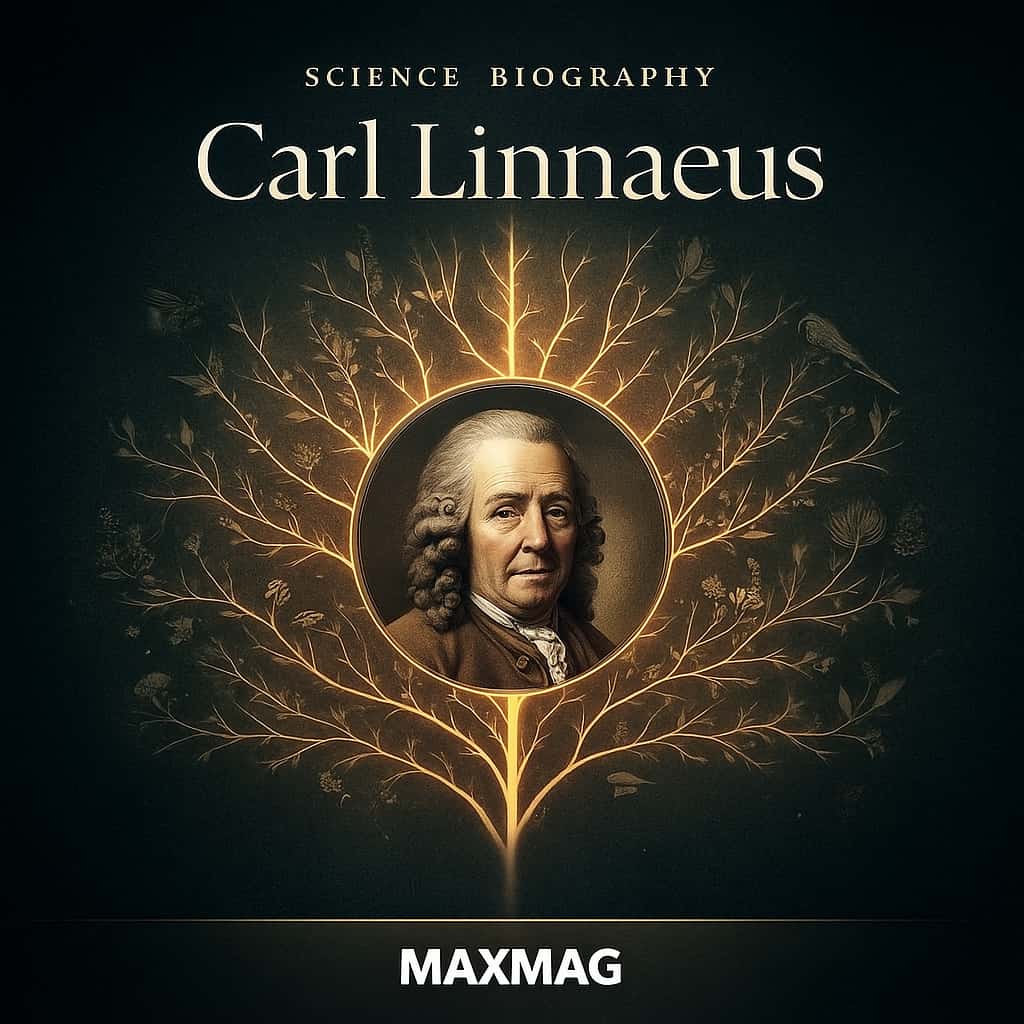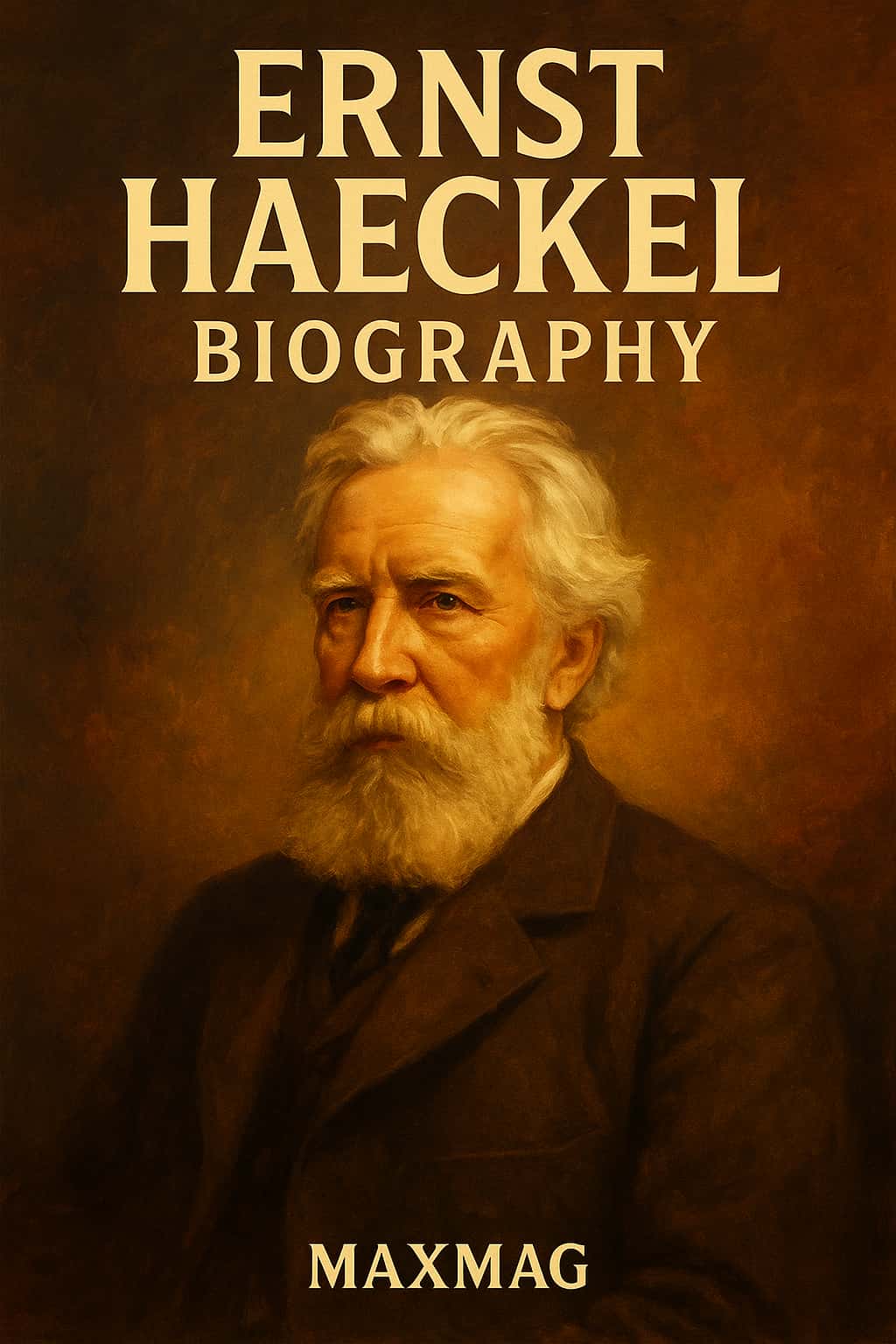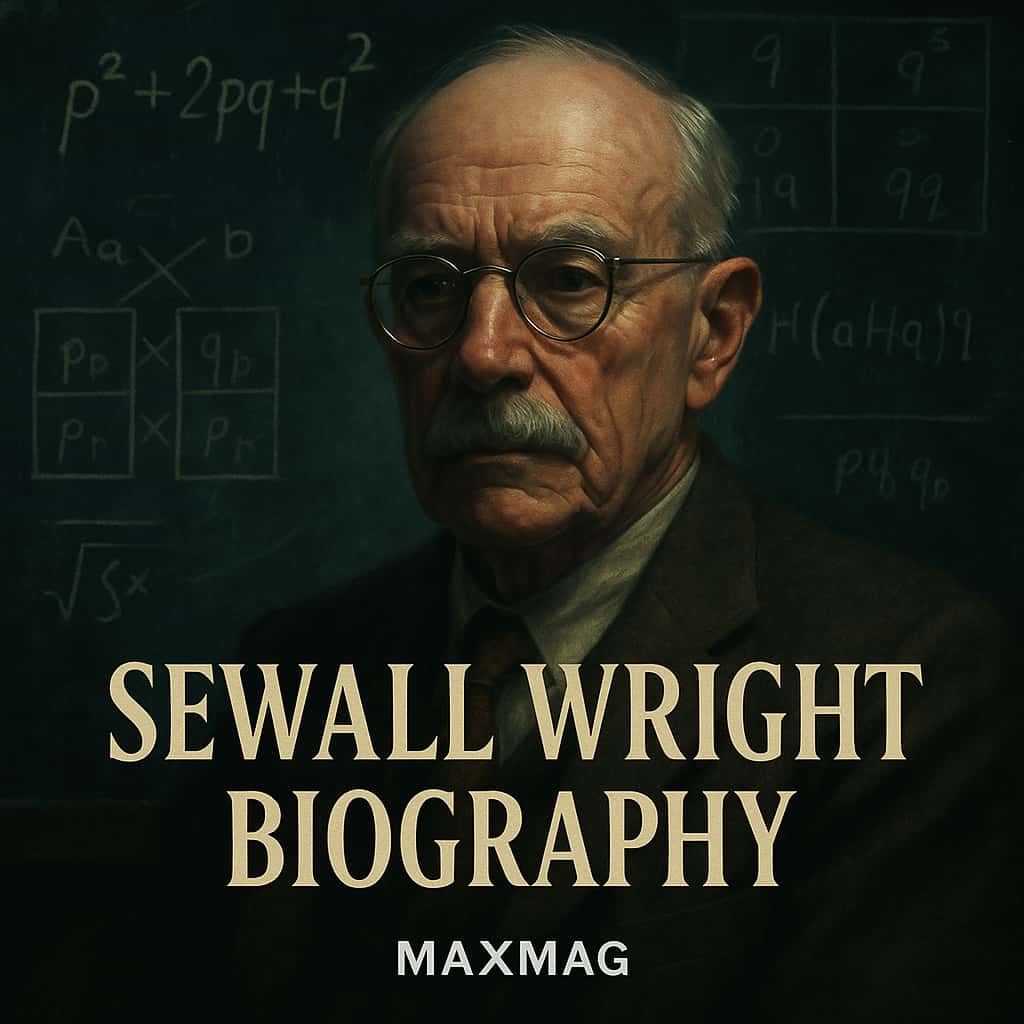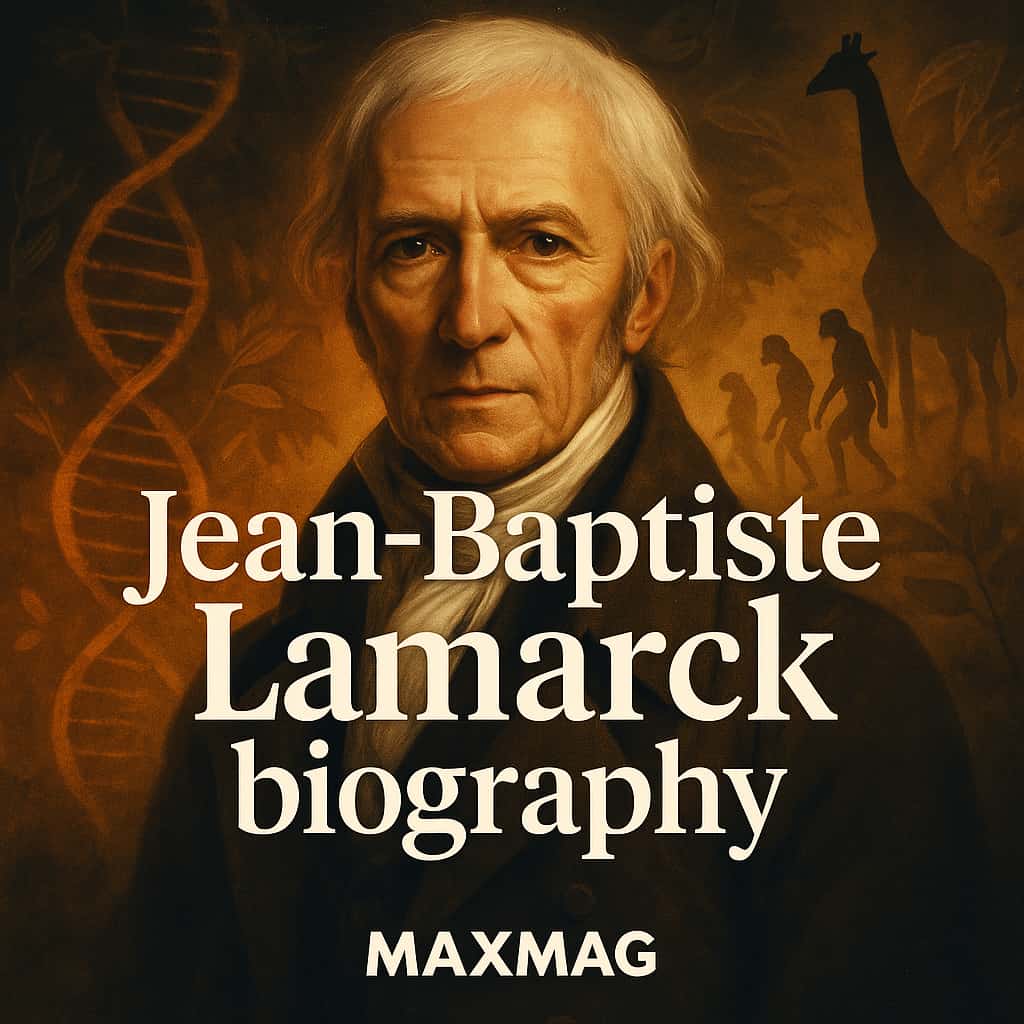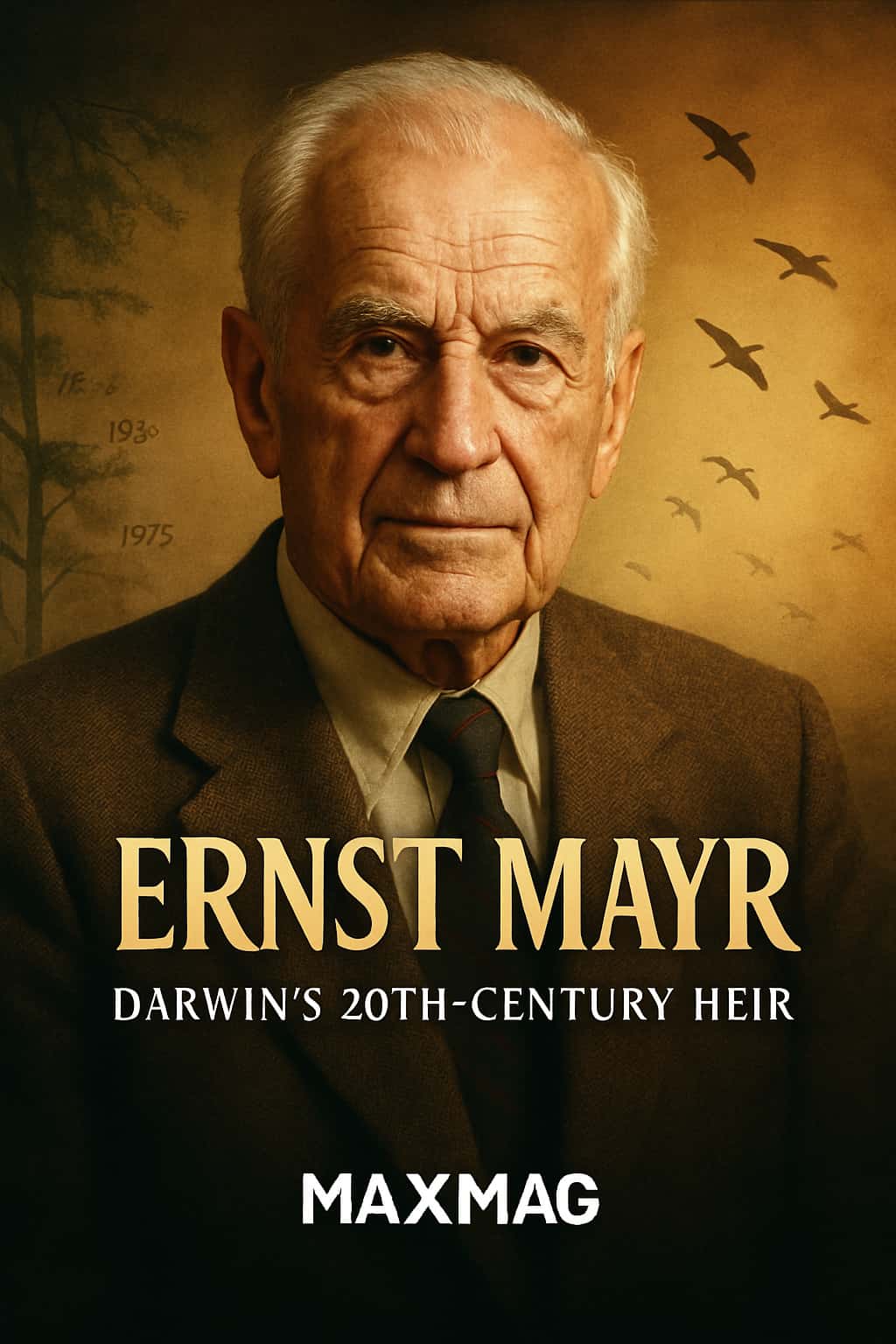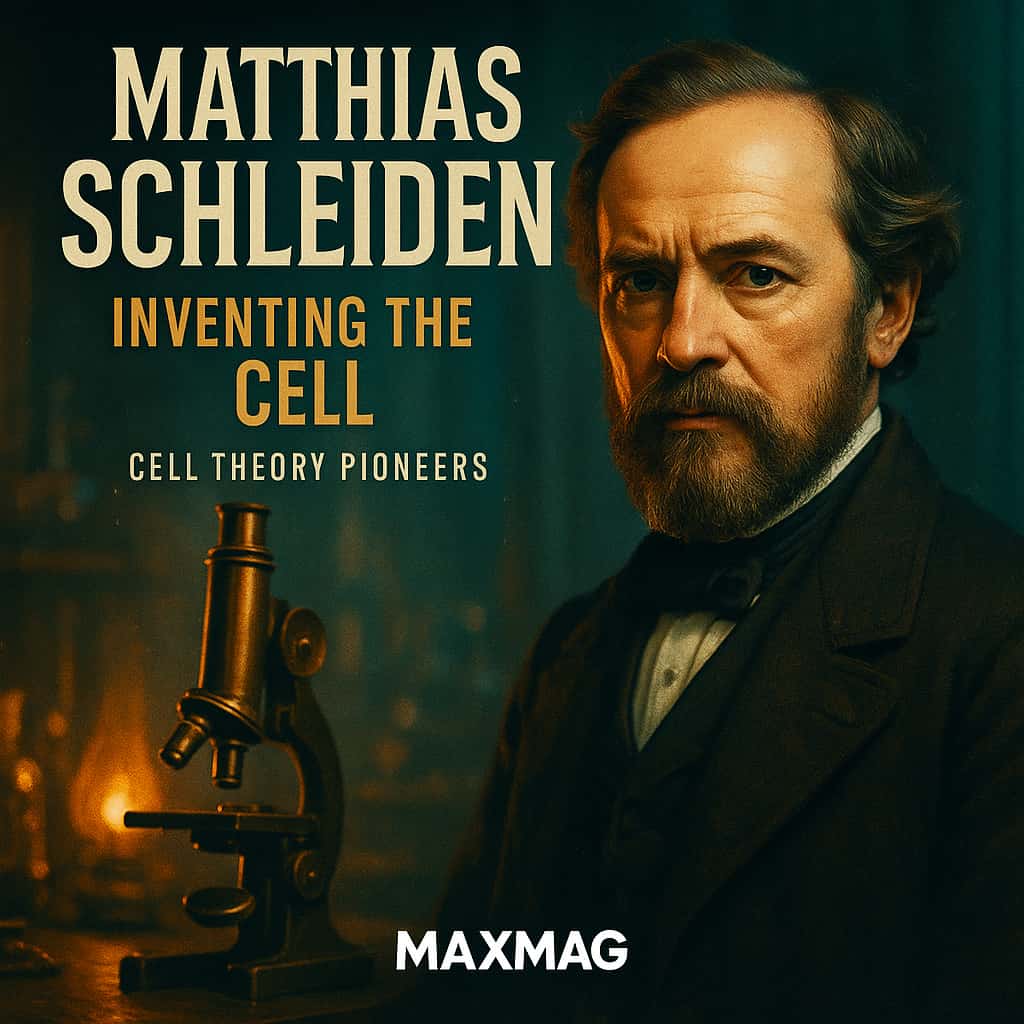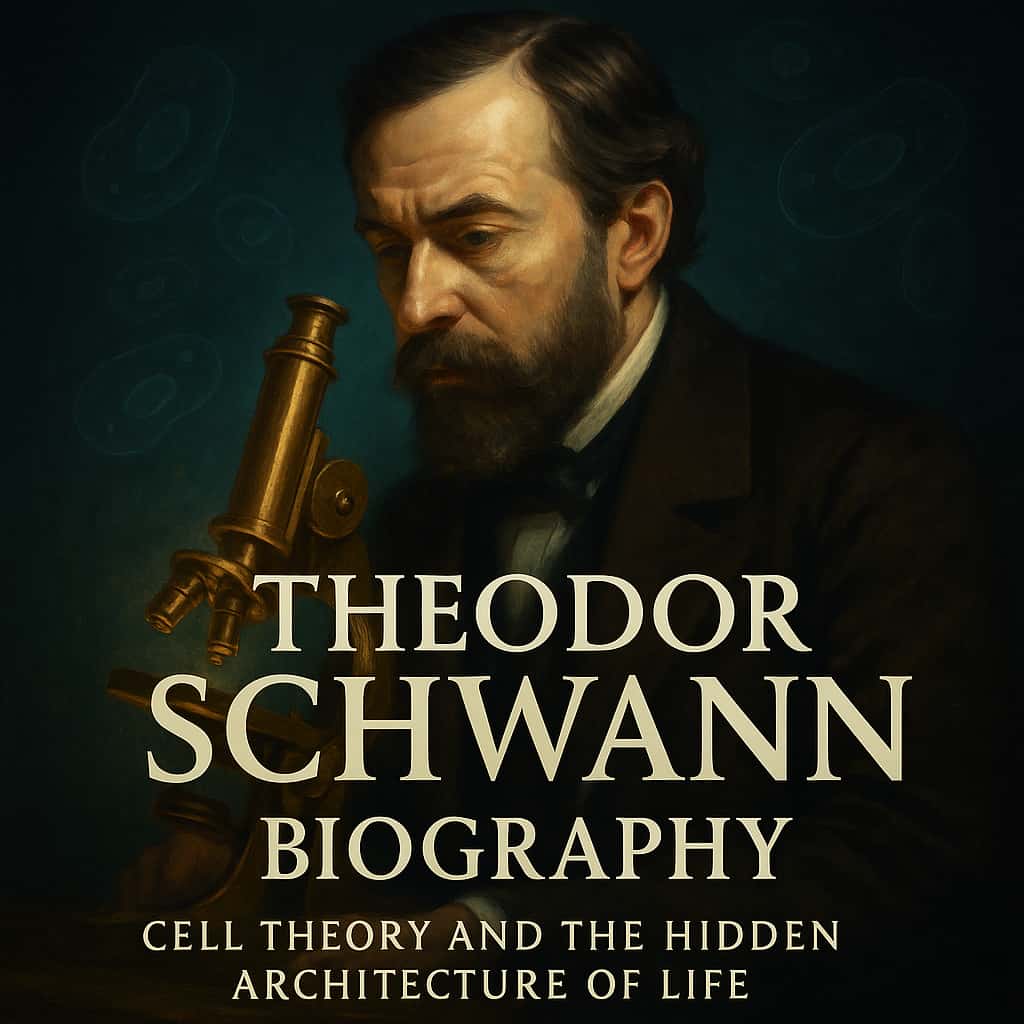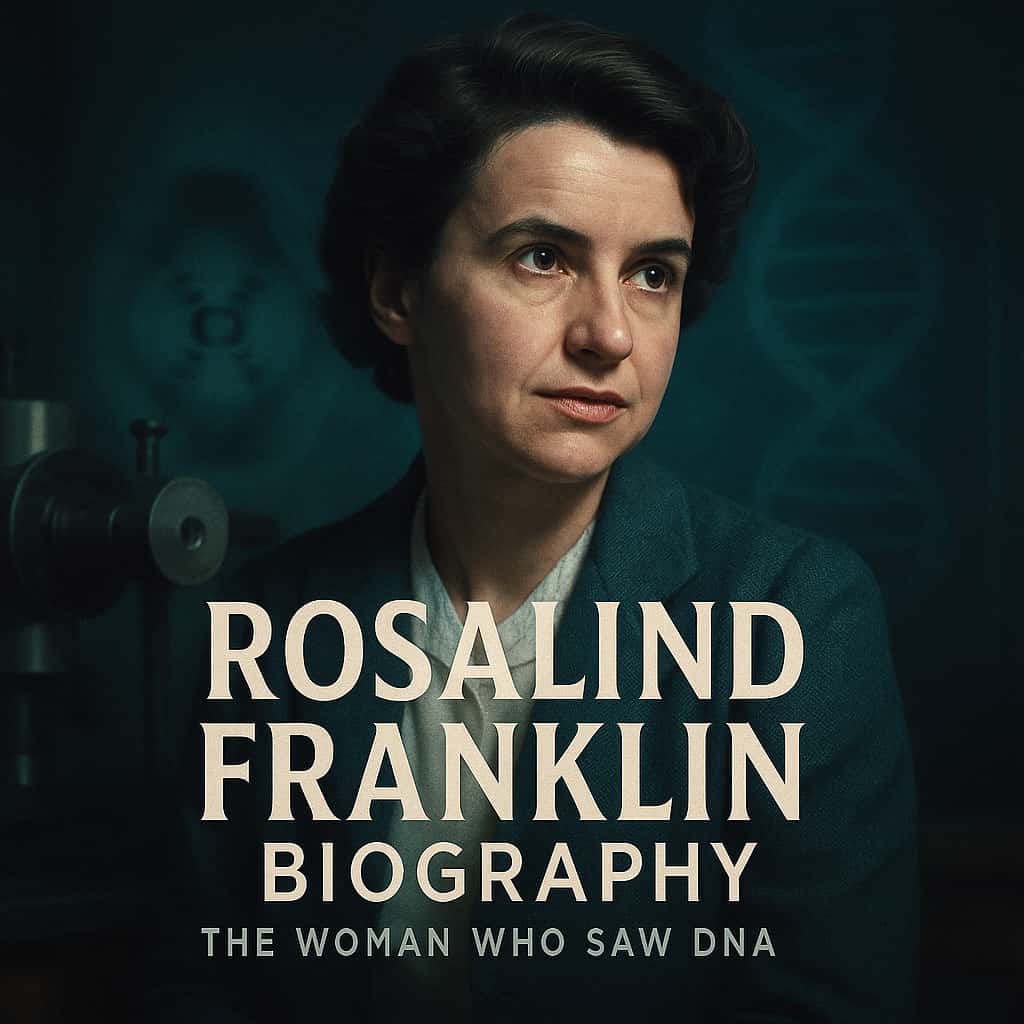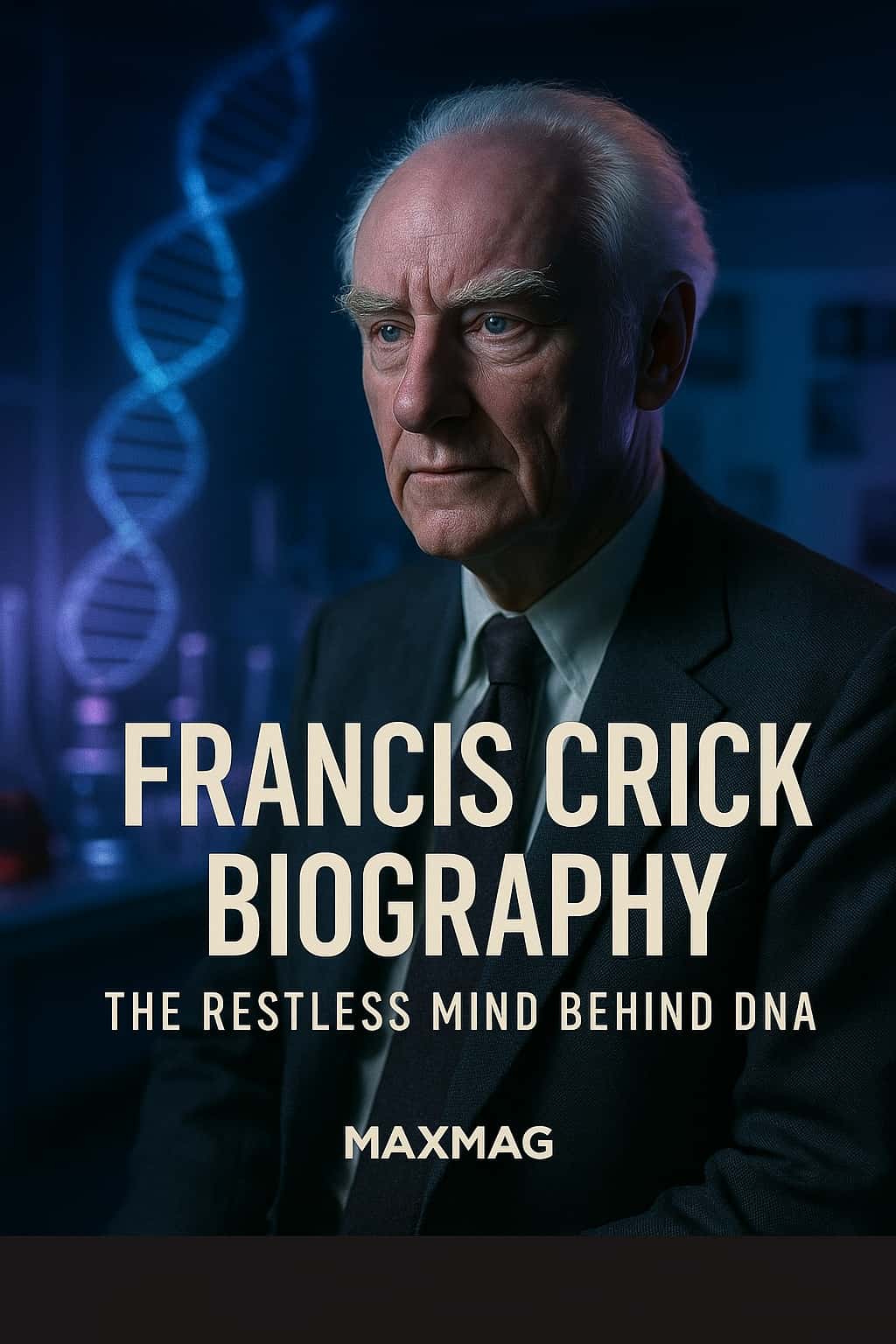
For anyone who has ever seen the famous DNA double helix spiralling across a textbook cover, the Francis Crick biography is the story behind that image. It is the story of a late-blooming physicist who turned to biology after a world war, of a man whose booming voice filled Cambridge pubs as easily as seminar rooms, and of a thinker who refused to stop asking questions, even when his first revolution in molecular biology was already secure. To understand how we came to see genes as information and the brain as a biological machine, you have to walk through the life of Francis Crick.
But the Francis Crick biography is not a tidy tale of a lone genius sketching the double helix on a napkin. It is a web of collaborations and rivalries, of borrowed data and bruised feelings, of a new kind of science emerging from cramped laboratories and cluttered offices. It is the history of DNA as much as the story of one molecular biology pioneer, and it still shapes how we think about heredity, disease and even consciousness today.
At a glance:
- Who: Francis Harry Compton Crick (1916–2004), English molecular biologist, biophysicist and neuroscientist.
- Field and era: Mid–20th century molecular biology pioneer at Cambridge and later the Salk Institute in California.
- Headline contributions: Co-discovery of the DNA double helix, central dogma of molecular biology, key work on the genetic code and later theories of consciousness.
- Why he matters today: The Francis Crick biography sits at the heart of genetics history and of modern debates about genes, brains and what it means to be human.
Early Life and Education of Francis Crick
A shopkeeper’s son in Northamptonshire
Francis Crick was born in 1916 in Weston Favell, then a village on the edge of Northampton, into a family that ran a small boot and shoe business. His father, Harry, was practical and steady; his mother, Annie, was devout and hoped her son might one day become a clergyman. Young Francis, however, was more interested in how things worked than in scripture. He played with Meccano sets, dismantled gadgets, and devoured popular science books. In later life he liked to say that he “gave up religion” as a teenager after reading about evolution and realising that the world could be explained without miracles.
Physics first, biology later
Crick’s first love was physics. He studied the subject at University College London, graduating in 1937 and beginning research on the viscosity of water at high temperatures. It was a far cry from DNA or neurons, but it trained him in mathematical thinking and the habit of reducing messy reality to underlying rules. The Second World War abruptly redirected his career. Recruited to the Admiralty Research Laboratory, he worked on magnetic and acoustic mines, part of the engineering race to protect Allied ships and disrupt the enemy’s.
Those war years did not appear glamorous in retrospect, but they left their mark. Crick later joked that working on mines had taught him to “do real problems,” and once peace came he found pure physics less compelling. In his early thirties, with his first marriage over and his PhD unfinished, he was adrift. The turning point in the Francis Crick biography came when he decided, almost impulsively, that the most exciting frontier lay not in stars or atoms but in the cell.
Reinventing himself in Cambridge
After the war Crick moved to Cambridge, effectively starting again as a mature student in a field he barely knew. He joined the Cavendish Laboratory, then a crucible of biophysics and X-ray crystallography, and began to learn the language of proteins and genes. As a thirty-five-year-old graduate student, he stood out among the more conventional young researchers. He talked loudly, argued relentlessly and seemed to have opinions about everything. Colleagues sometimes found him exhausting, but many were drawn to his energy and to the sense that he was thinking on a larger canvas than most.
Even at this early stage, the Francis Crick biography shows a pattern that would repeat: he was less interested in collecting data than in finding the conceptual structure that made disparate facts fall into place. In physics he had tackled the behaviour of matter; in biology he wanted the underlying logic of life.
Francis Crick biography and the birth of the double helix
From war work to DNA obsession
When Crick arrived in Cambridge biology, DNA was not yet the star of genetics history. Many biologists believed that proteins, with their rich chemical variety, must carry hereditary information. DNA, a repetitive polymer of just four chemical bases, seemed too dull to be the “stuff of genes”. Crick, however, was intrigued by the way X-ray patterns hinted at hidden order, and he quickly became an expert on helical diffraction—the mathematics of how spirals scatter X-rays.
The true pivot in the Francis Crick biography came in 1951, when a 23-year-old American biologist, James Watson, arrived in Cambridge. Watson had one overriding ambition: to crack the structure of DNA. Crick, still technically a student, shared the obsession. The two fell into intense conversation, pacing the Cavendish corridors and nearby pubs, swapping ideas and sketching models. They were not experimentalists; they relied on a steady stream of data from others, especially the X-ray crystallography being done at King’s College London by Rosalind Franklin and Maurice Wilkins.
How the Francis Crick biography became entwined with Watson and Franklin
In 1953, after several false starts and a bruising clash with Franklin—who had sharply criticised an earlier, incorrect model—Watson walked into Crick’s rooms carrying a crucial X-ray photograph from King’s, known as “Photo 51”. It had been shown to him by Wilkins without Franklin’s knowledge. Crick immediately recognised what the dark cross of spots meant: DNA must be a helix with particular dimensions. Combining those clues with Chargaff’s rules about base ratios and Crick’s own helical calculations, the pair built a wooden-and-metal model that finally made sense.
When their short paper appeared in Nature in April 1953, it ended with a now-famous understatement: “It has not escaped our notice that the specific pairing we have postulated immediately suggests a possible copying mechanism for the genetic material.” That single sentence turned the Francis Crick biography into part of a larger myth: the heroic unveiling of the “secret of life”. Yet even at the time, it rested on a complicated mix of insight and appropriation, with Franklin’s precise experimental work acknowledged only in a brief accompanying paper.
Rosalind Franklin and the missing name in the Francis Crick biography
Any honest Francis Crick biography must reckon with the role of Rosalind Franklin. A gifted physical chemist, she produced the sharpest X-ray images of DNA, painstakingly analysing the A and B forms of the molecule. Her data—especially Photo 51—were essential to the final model, yet she was not consulted when those images were shared with Watson and Crick, and she died in 1958, four years before the Nobel Prize was awarded to Crick, Watson and Wilkins alone.
Historians still debate whether Crick fully appreciated, at the time, the ethical implications of using another scientist’s unpublished data without permission. Later in life he spoke warmly of Franklin’s abilities and was wary of the simplistic hero-villain narratives that grew up around the DNA story. Still, the way her contribution was marginalised in public memory became one of the central controversies in the wider Watson-and-Crick saga and remains a key theme whenever people revisit the Francis Crick biography today.
For readers who want a detailed narrative of this period, the U.S. National Library of Medicine provides an excellent account of the discovery of the double helix, 1951–1953 that places Crick’s role alongside that of his collaborators and rivals.
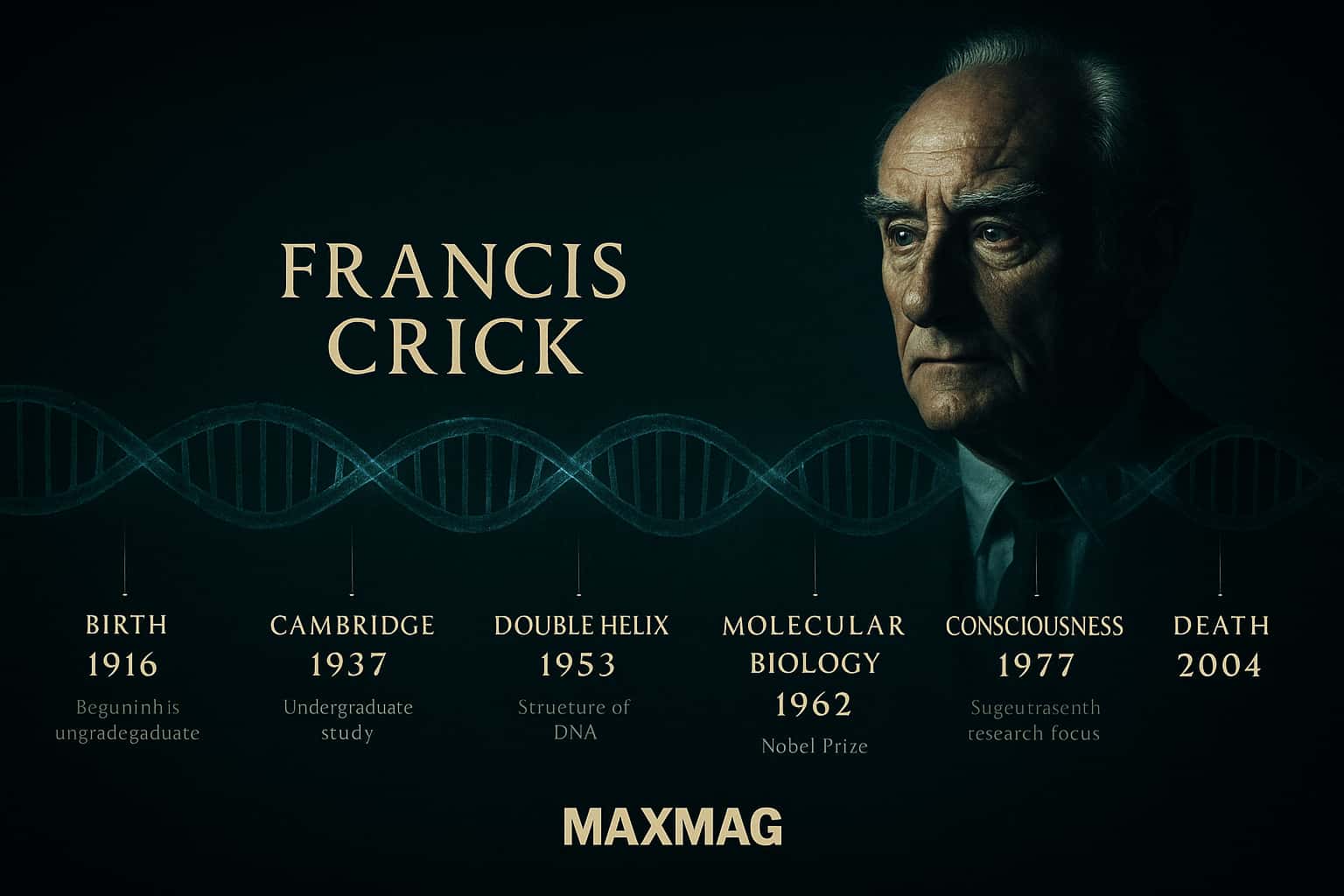
Key Works and Major Contributions of Francis Crick
From the double helix to the genetic code
If the double helix solved the puzzle of DNA’s structure, it left a bigger question hanging: how do sequences of four chemical bases specify the thousands of proteins that build and run a cell? Over the next decade, Crick turned his attention to this coding problem. He proposed that groups of three bases—codons—might correspond to particular amino acids, helping to guide experiments that eventually cracked the genetic code. His central idea was that there had to be a systematic, non-overlapping way to read DNA, an intuition that guided the emerging field of molecular genetics.
This work cemented the Francis Crick legacy as more than a one-hit wonder. Rather than move on to a new fashionable topic, he dug into the logic of heredity itself, helping to turn 20th-century science toward a view of life as information stored, copied and translated inside cells.
The “central dogma” and information flow
Crick is perhaps best known to students of molecular biology for coining the “central dogma”. In essence, it is the rule that information in biology tends to flow from DNA to RNA to protein, but not back the other way. Once instructions have been translated into the machinery of the cell, they cannot rewrite the original genetic script. This tidy schema was never a literal law—modern biology recognises exceptions such as reverse transcription in retroviruses—but it was a powerful organising principle.
The central dogma gave scientists a mental map for thinking about mutations, gene regulation and disease. In the Francis Crick biography, it marks a shift from structural discovery to theoretical leadership: Crick was now a kind of cartographer of molecular biology, sketching the routes along which genetic information travelled.
Shaping the new discipline of molecular biology
Beyond specific theories, Crick was one of the architects of molecular biology as a discipline. At Cambridge’s Laboratory of Molecular Biology and in international collaborations, he mentored younger researchers, set agendas and argued fiercely for a reductionist approach: to understand life by breaking it down into molecules and mechanisms. His charismatic—and sometimes overbearing—presence at conferences helped to define what counted as an interesting question.
For better and for worse, this molecular focus narrowed biology’s gaze on genes and proteins, sometimes at the expense of ecology or whole-organism perspectives. The Francis Crick biography is therefore also a chapter in the story of how one style of reasoning came to dominate 20th-century life science.
Methods, Collaborations and Working Style
A theorist in a world of experiments
Crick was not the kind of scientist who spent long hours in the darkroom or huddled over fragile apparatus. He did do experiments, especially early in his career, but his real contribution lay in thinking, talking and building conceptual models. Colleagues recall him striding into offices with a sheaf of notes, covering blackboards with arrows and boxes, then sweeping it all away if a single fact failed to fit.
In modern management jargon you might call him a “big-picture” thinker, but that undersells his technical command. His training in physics meant he could interrogate X-ray patterns or statistical models as easily as a biologist could peer down a microscope. In the Francis Crick biography, this hybrid skillset is one reason his ideas travelled so quickly across fields.
Collaboration and conflict in the lab
The partnership with James Watson is the best-known collaboration in the Francis Crick biography, but it was far from his only one. He worked closely with Sydney Brenner on the genetic code and with many younger scientists who later became leaders in their own right. These collaborations were often intense. Crick’s debating style—rapid, relentless, sometimes dismissive—could be bruising, yet many protégés later said it sharpened their thinking.
At the same time, his reliance on others’ experimental data left him vulnerable to accusations of opportunism, especially in the DNA years. The delicate balance between sharing and ownership in science, now formalised in authorship and data policies, was far looser in the 1950s. Crick operated in that grey zone, and his story is often used in discussions of research ethics today.
Talking science into existence
One striking feature in many accounts of the Francis Crick biography is how much he talked. Friends and colleagues recall informal meetings stretching late into the night, with Crick summarising entire conferences or sketching new hypotheses on restaurant tablecloths. An archivist of his papers has argued that these “persuasive moments of personal delivery” were one of his main tools of influence, as important as anything he published.
In an era before email and PowerPoint, ideas moved through letters, seminars and conversations. Crick excelled at all three. His style reminds us that science is a social enterprise: breakthroughs happen not only in quiet labs but also in noisy rooms where people argue about what the data mean.
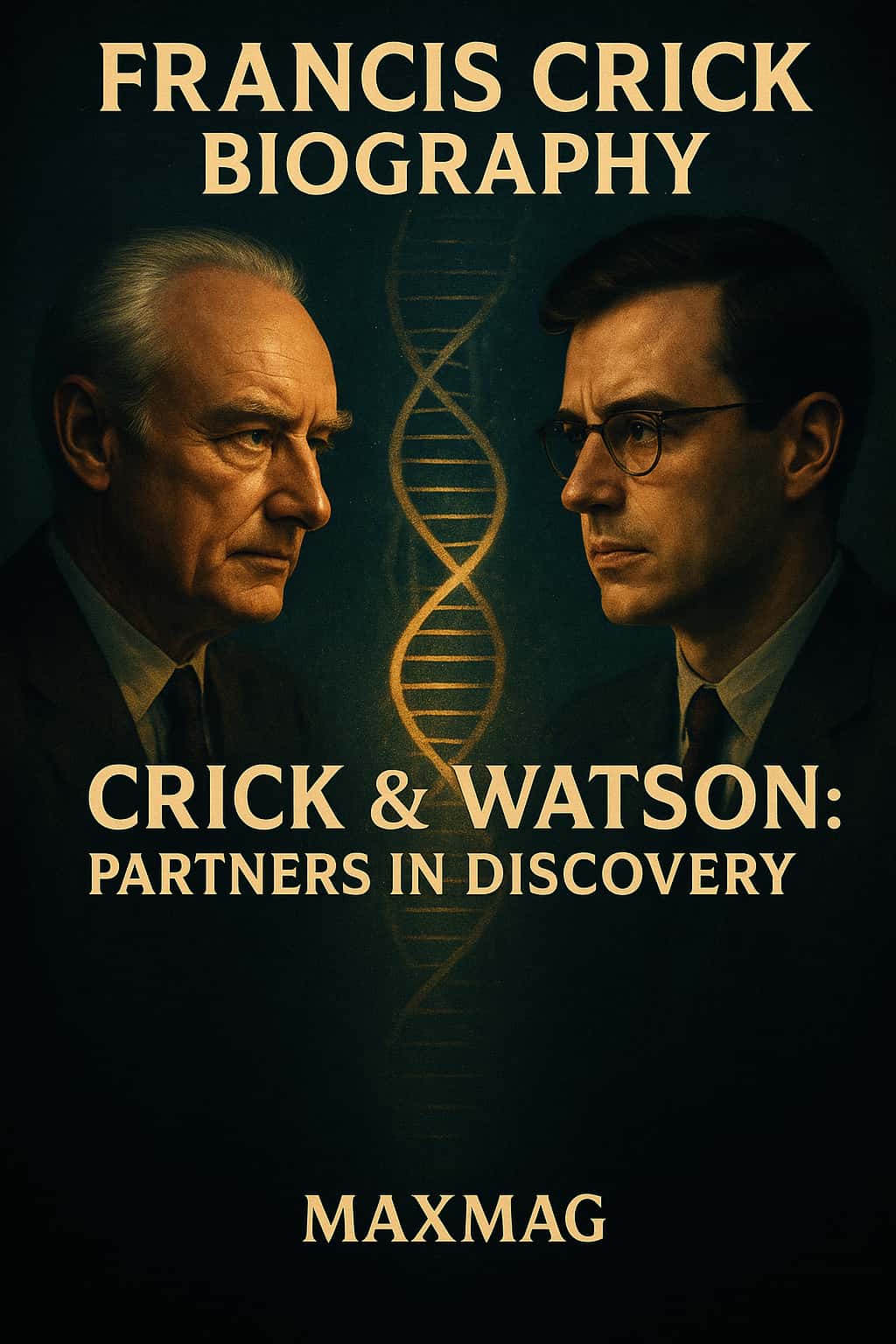
Controversies, Criticism and Misconceptions
Myths about the “lone genius”
Popular narratives often compress the discovery of DNA into a simple tale of Watson and Crick “seeing” the double helix in a flash of inspiration. The reality, documented in laboratory notebooks and institutional archives, is messier. Franklin, Wilkins and many others produced crucial clues; rival teams, including that of Linus Pauling, came close with alternative models.
Crick himself was uneasy with the lone-genius myth, at least in later years. The Francis Crick biography, if told honestly, is a story of networks and overlapping contributions. Recognising that does not diminish his insight; it simply situates it within the collaborative fabric of 20th-century science.
Ethics, eugenics and the darker side of genetics history
In recent years, historians have examined Crick’s flirtation with ideas around population control and eugenics, placing him alongside other mid-century scientists who thought genetics could be used to “improve” humanity. While he was never as publicly inflammatory as Watson, some of his comments about intelligence, reproduction and social policy now read uncomfortably, especially in light of the racist history of eugenics.
This aspect of the Francis Crick biography is still being debated. Some scholars argue that his views reflected a broader technocratic optimism rather than explicit racism; others see them as part of the same problematic current that flowed through much of 20th-century science. Either way, they remind us that scientific brilliance does not guarantee moral clarity, and that the tools Crick helped create can be used in ways he never anticipated.
LSD, speculation and the limits of evidence
Another controversial thread in the Francis Crick biography is his openness to mind-altering experiences and speculative ideas. Accounts from friends suggest he experimented with LSD in the 1950s and 60s, seeing it as a way to explore consciousness—long before psychedelics returned to mainstream neuroscience. Reporters later seized on this, spinning tales of the double helix being “seen on acid”, though there is no evidence that LSD played any direct role in the DNA discovery.
More substantively, some critics felt Crick’s later work on consciousness leapt too quickly from neural mechanisms to philosophical conclusions. Yet even those who disagreed with his “astonishing hypothesis”—that our sense of self is nothing more than the activity of nerve cells and molecules—acknowledged that his boldness forced neuroscientists to sharpen their own arguments.
Impact on molecular biology and on wider society
Rewriting medicine and biotechnology
The double helix did not just solve a textbook puzzle; it became the foundation for modern genetics and biotechnology. Once scientists understood how DNA stored information, they could begin to read and manipulate it. Everything from forensic DNA testing to genetically engineered crops and personalised cancer therapies traces back, in some way, to the conceptual breakthroughs associated with the Francis Crick biography.
This transformation of medicine and agriculture has brought enormous benefits, but it has also raised questions about privacy, inequality and the commodification of life. When we talk today about gene editing or ancestry testing, we are still living in the world that Watson, Crick, Franklin and their peers helped create.
A symbol in culture and politics
Over time, Crick himself became a symbol. For some, he embodied fearless rationalism: a scientist who challenged religious dogma, argued publicly for secularism and insisted that human beings are biological organisms rather than souls in temporary bodies. For others, especially critics of reductionism, the Francis Crick legacy represents an overly gene-centric view of life that sidelines culture, environment and social structures.
These tensions surface whenever genetics enters public debate, whether about designer babies, behavioural traits or the legacy of eugenics. The Francis Crick biography thus sits at an intersection where science meets politics and ethics, reminding us that how we tell scientific stories matters.
How the Francis Crick biography is remembered
When Crick died in 2004, obituaries around the world described him as one of the most influential scientists of the 20th century, but they differed on which achievements to emphasise. Some celebrated the double helix above all; others highlighted his broader role in shaping molecular biology or his provocative forays into neuroscience. A widely read New York Times obituary portrayed him as the “leading molecular biologist of his age”, while also noting his sometimes abrasive personality.
Today, as new biographies and historical studies appear, that picture continues to evolve. Recent works have stressed both the collaborative nature of his science and the blind spots in his worldview, making the Francis Crick biography feel less like a marble statue and more like a living, contested story.
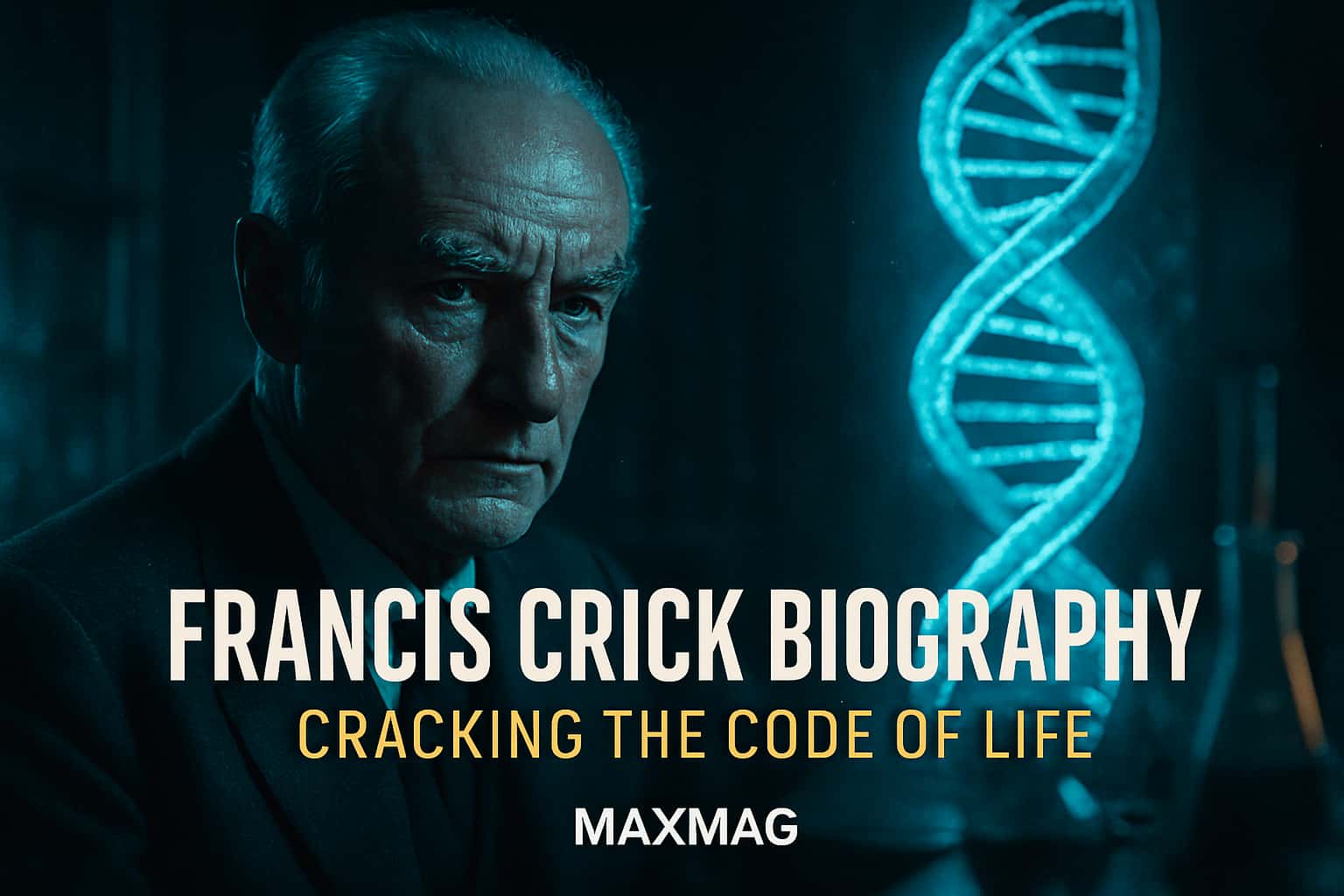
Personal Beliefs, Character and Private Life
A loud laugh and a taste for argument
By most accounts, Crick was impossible to ignore. Tall, with a booming laugh and a fondness for colourful ties, he dominated any room he entered. Watson famously began his memoir The Double Helix with the line, “I have never seen Francis Crick in a modest mood,” and while the portrait was exaggerated, it captured something real. Crick liked to argue, and he relished cutting through what he saw as woolly thinking.
Yet friends also remember a generous host who loved good food, wine and conversation. At home with his second wife, Odile—an artist who later designed the iconic DNA double helix artwork for the Cavendish staircase—he entertained a steady stream of students and colleagues. The domestic scenes in the Francis Crick biography show a man who mixed science and social life with unusual ease.
From lost faith to outspoken atheism
Crick abandoned religious belief as a young man and never looked back. In later life he was an outspoken atheist, critical of efforts to reconcile science and religion. His book The Astonishing Hypothesis opened with the stark claim that “You, your joys and your sorrows… are in fact no more than the behaviour of a vast assembly of nerve cells and their associated molecules.” For some readers, this was exhilarating; for others, it felt like an assault on cherished ideas of the soul.
This philosophical stance coloured the Francis Crick biography at every stage. His drive to reduce complex phenomena—life, mind, morality—to physical processes was not just a scientific strategy but a worldview. Agree or disagree, it forced peers and critics alike to clarify their own positions.
Family life and relationships
Crick married twice and had three children. His first marriage, to Ruth Doreen Dodd, ended after the strains of war and career upheaval. In 1949 he married Odile Speed, with whom he shared a long partnership that combined art, science and expatriate life first in Cambridge and later in California. Those who knew them describe a household full of books, paintings and scientific gossip, where children, students and visiting Nobel laureates mingled.
The Francis Crick biography is often dominated by intellectual drama, but these quieter domestic threads add texture. They remind us that the people who reshape science still navigate ordinary joys and losses: marriages that work or fail, children growing up, illnesses that intrude on carefully planned research schedules.
Later Years and Final Chapter of Francis Crick
Reinventing himself again: from genes to consciousness
In the late 1970s, Crick made another radical shift. Having spent decades on DNA and the genetic code, he moved to the Salk Institute in La Jolla, California, and plunged into neuroscience. There he collaborated with younger researchers such as Christof Koch, arguing that the “hard problem” of consciousness—how subjective experience arises from brain activity—should be tackled head-on with experiments and theory.
This phase of the Francis Crick biography illustrates his refusal to coast on past glory. He was in his sixties and seventies, yet he was learning new methods, attending neurobiology seminars and publishing papers on visual perception and neural correlates of consciousness. Many neuroscientists now see his insistence that consciousness is a legitimate scientific problem as one of his most important late contributions.
Working to the end
Crick continued working almost until his death. In July 2004, suffering from colon cancer, he was still editing a manuscript at the Salk Institute. He died in a San Diego hospital at the age of 88; his ashes were scattered in the Pacific Ocean. Colleagues later remarked that he remained curious and combative to the end, debating ideas from his hospital bed.
Obituaries and memorial lectures emphasised the arc of the Francis Crick biography: from a shopkeeper’s son in Northampton to one of the central figures in 20th-century science. At a memorial at the Salk Institute, speakers ranging from Watson and Brenner to philosophers and neuroscientists described not only his discoveries but also his role as a relentless questioner.
Remembered in institutions and archives
Today, Crick’s name lives on in buildings and institutes, most notably the Francis Crick Institute in London, a major centre for biomedical research. His papers, letters and laboratory notebooks are preserved in archives such as the U.S. National Library of Medicine’s “Profiles in Science” collection, which allows historians to track how his ideas evolved over time.
These institutional legacies are part of the Francis Crick legacy, but they also reflect a broader point: revolutions in science do not end when their protagonists die. They continue in the daily work of thousands of researchers who may never read the original papers but live inside the conceptual world those papers created.
The Lasting Legacy of the Francis Crick biography
Why the Francis Crick biography still matters
When we teach schoolchildren that DNA is a double helix, or when doctors send off a tube of blood for genetic sequencing, we are drawing on ideas first crystallised in the mid-20th century. The Francis Crick biography is therefore not just a historical curiosity; it is part of the operating system of modern biology. It explains how we came to think of genes as code, of cells as information-processing machines, and of the brain as a physical organ rather than a mystical seat of the soul.
At the same time, revisiting the Francis Crick biography forces us to confront the blind spots and ethical dilemmas of that era: the marginalisation of Rosalind Franklin, the casual talk of eugenics, the tendency to reduce complex human traits to simple genetic causes. In that sense, understanding the Francis Crick legacy can help us design a more responsible genetics for the 21st century.
From DNA to today’s debates
The intellectual tools that emerged from Crick’s work now underpin politically charged technologies: CRISPR gene editing, reproductive screening, large-scale brain mapping. As societies argue about how far to push these tools—whether in editing embryos or in using neural data in courts—the basic framework of DNA-to-RNA-to-protein that he helped articulate still anchors the discussion. The Francis Crick biography is thus also a chapter in the ongoing debate over how much power humans should have over their own biology.
In the end, what makes the Francis Crick biography compelling is not just the double helix or the Nobel Prize. It is the picture of a restless mind that refused to stay in one box, that moved from physics to molecular biology to neuroscience, always chasing the biggest questions available. To understand that journey is to understand not just one scientist, but a whole era of modern science in motion.
Frequently Asked Questions about Francis Crick biography
Q1: What is the Francis Crick biography mainly known for?
Q2: How did Francis Crick move from physics into molecular biology?
Q3: What other contributions did Francis Crick make beyond DNA?
Q4: Why is Rosalind Franklin important to any Francis Crick biography?
Q5: Did Francis Crick hold controversial views?
Q6: How does learning about the Francis Crick biography help us today?

